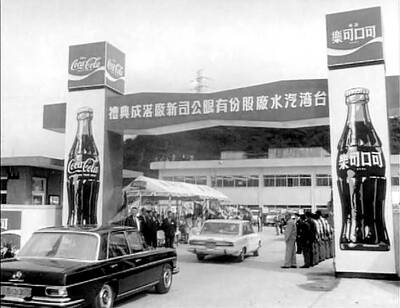Flooded roads and subways, deformed railroad tracks and weakened bridges may be the wave of the future with continuing global warming, a new US study says.
Climate change will affect every type of transportation through rising sea levels, increased rainfall and surges from more intense storms, the US' National Research Council said in a report released Tuesday.
Complicating matters, people continue to move into coastal areas, creating the need for more roads and services in the most vulnerable regions, the report noted.
"We believe that the threats to our transportation system are real," Henry Schwartz Jr said in a briefing. He is former president and chairman of the engineering firm Sverdrup/Jacobs Civil Inc, and chairman of the committee that wrote the report.
The storm that has been a once-a-century event may become a once-in-50-years event, he said, adding, "What is the proper level to design for?"
Much of the damage will be in coastal areas, but the impact will affect all areas of the country," Schwartz said. "It's time to move from the debate about climate science to 'What are we going to do about it ... how are we going to adapt to it?"'
Luisa Paiewonsky, commissioner of the Massachusetts Highway Department said her state is beginning an inventory of low-lying infrastructure because of the danger of rising sea-levels.
Thomas Karl, director of the National Climatic Data Center, said, "an important message of this report is to begin incorporating that into design and planning." The probable costs of such improvements were not analyzed in the report, but Schwartz said the costs would be significant. However, he added, it would be less costly to prepare in advance than to deal with a catastrophe.
The report cites five major areas of growing threat:
: More heat waves, requiring load limits at hot-weather or high-altitude airports and causing thermal expansion of bridge joints and rail track deformities.
: Rising sea levels and storm surges flooding coastal roadways, forcing evacuations, inundating airports and rail lines, flooding tunnels and eroding bridge bases.
: More rainstorms, delaying air and ground traffic; flooding tunnels and railways; and eroding road and bridge supports.
: More frequent strong hurricanes, disrupting air and shipping service, blowing debris onto roads and damaging buildings.
: Rising Arctic temperatures thawing permafrost, resulting in road, railway and airport runway subsidence and potential pipeline failures.
The US transportation system was built for local conditions based on historical weather data, but those data may no longer be reliable in the face of new weather extremes, the report warns.
The committee said proper preparation would be expensive and called on federal, state and local governments to increase consideration of climate change in transportation planning and construction.
The report notes, for example, that drier conditions are likely in the watersheds supplying the St Lawrence Seaway and the Great Lakes. The resulting lower water levels would reduce vessel shipping capacity, seriously impairing freight movements in the region, such as occurred during the drought of 1988.
Meanwhile, California heat waves are likely to increase wildfires that can destroy transportation infrastructure.
The outlook is not all bad, however.
The report says marine transportation could benefit from more open seas in the Arctic, creating new and shorter shipping routes and reducing transport time and costs.
The report was prepared by the Transportation Research Board and the Division on Earth and Life Studies of the US' National Research Council. The groups are part of the US' National Academy of Sciences, an independent agency chartered by Congress to advise the government on scientific matters.

July 28 to Aug. 3 Former president Chiang Kai-shek (蔣介石) reportedly maintained a simple diet and preferred to drink warm water — but one indulgence he enjoyed was a banned drink: Coca-Cola. Although a Coca-Cola plant was built in Taiwan in 1957, It was only allowed to sell to the US military and other American agencies. However, Chiang’s aides recall procuring the soft drink at US military exchange stores, and there’s also records of the Presidential Office ordering in bulk from Hong Kong. By the 1960s, it wasn’t difficult for those with means or connections to obtain Coca-Cola from the

No one saw it coming. Everyone — including the Chinese Nationalist Party (KMT) — expected at least some of the recall campaigns against 24 of its lawmakers and Hsinchu Mayor Ann Kao (高虹安) to succeed. Underground gamblers reportedly expected between five and eight lawmakers to lose their jobs. All of this analysis made sense, but contained a fatal flaw. The record of the recall campaigns, the collapse of the KMT-led recalls, and polling data all pointed to enthusiastic high turnout in support of the recall campaigns, and that those against the recalls were unenthusiastic and far less likely to vote. That

Taiwan is today going to participate in a world-first experiment in democracy. Twenty-four Chinese Nationalist Party (KMT) lawmakers will face a recall vote, with the results determining if they keep their jobs. Some recalls look safe for the incumbents, other lawmakers appear heading for a fall and many could go either way. Predictions on the outcome vary widely, which is unsurprising — this is the first time worldwide a mass recall has ever been attempted at the national level. Even meteorologists are unclear what will happen. As this paper reported, the interactions between tropical storms Francisco and Com-May could lead to

A couple of weeks ago the parties aligned with the People’s Republic of China (PRC), the Chinese Nationalist Party (KMT) and the Taiwan People’s Party (TPP), voted in the legislature to eliminate the subsidy that enables Taiwan Power Co (Taipower) to keep up with its burgeoning debt, and instead pay for universal cash handouts worth NT$10,000. The subsidy would have been NT$100 billion, while the cash handout had a budget of NT$235 billion. The bill mandates that the cash payments must be completed by Oct. 31 of this year. The changes were part of the overall NT$545 billion budget approved